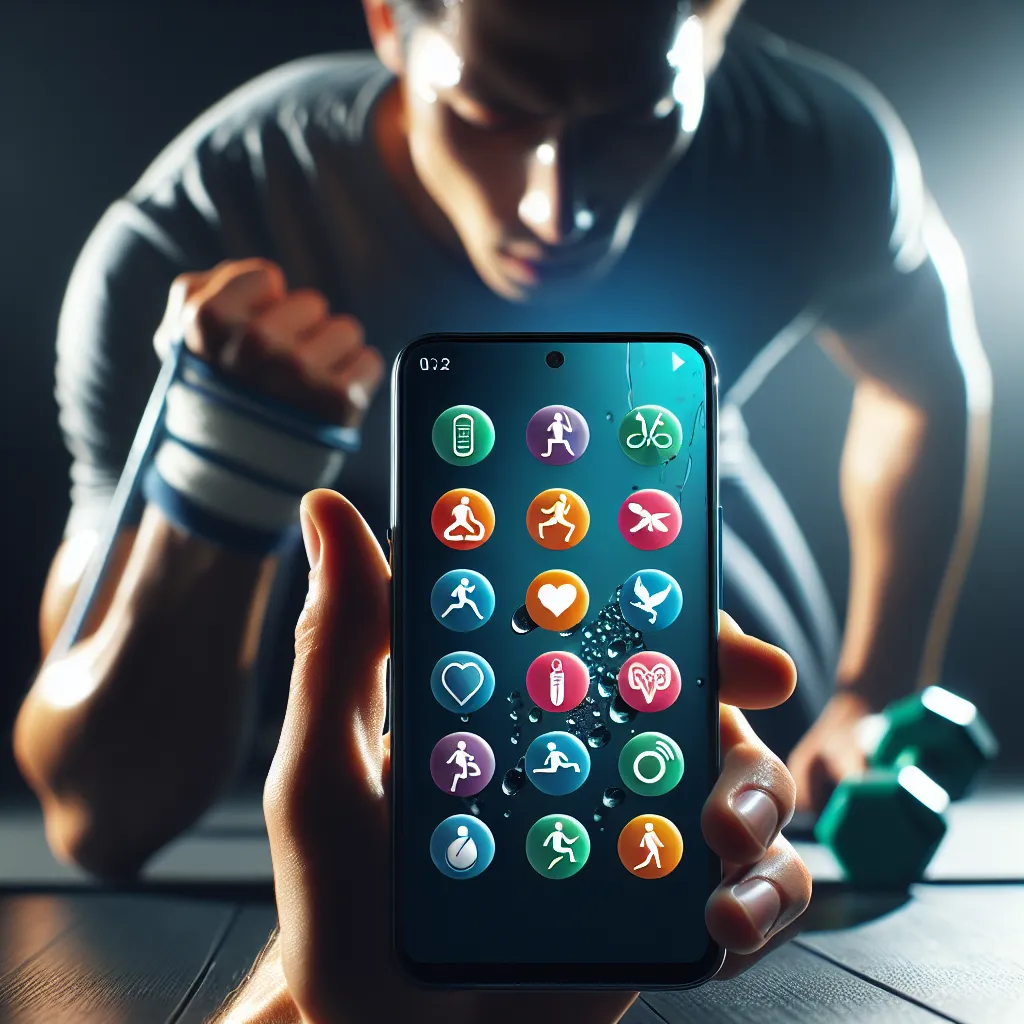The IELTS Reading section is a crucial component of the test, assessing your ability to comprehend complex texts and answer various question types. Today, we’ll focus on a topic that has gained significant popularity in recent years – home workout apps. This subject has become increasingly relevant, especially in light of global events that have shifted many fitness routines from gyms to home environments. Based on current trends and the frequency of health-related topics in IELTS exams, it’s likely that similar themes may appear in future tests. Let’s dive into a practice reading passage about the best home workout apps, followed by a series of questions to help you prepare for the IELTS Reading section.
Nội dung bài viết
 Best Home Workout Apps
Best Home Workout Apps
Reading Passage
The Rise of Home Workout Apps
In recent years, the fitness industry has witnessed a significant shift towards digital platforms, with home workout apps leading the charge. This trend has been accelerated by global events that have forced many to reconsider their exercise routines. As a result, the market for home workout apps has exploded, offering users a wide array of options to stay fit without stepping foot in a gym.
Among the plethora of available apps, several stand out for their innovative features and user-friendly interfaces. One such app is Fitness Blender, which has gained a massive following due to its extensive library of free workout videos. These range from high-intensity interval training (HIIT) to yoga and pilates, catering to various fitness levels and preferences. The app’s success lies in its no-frills approach, focusing on effective workouts rather than flashy graphics or celebrity endorsements.
Another popular choice is Nike Training Club, which offers a premium experience without the premium price tag. The app provides users with personalized workout plans based on their fitness goals and available equipment. What sets Nike Training Club apart is its integration of audio-guided runs and mindfulness sessions, promoting a holistic approach to health and wellness.
For those seeking a more gamified experience, Zombies, Run! has carved out a unique niche. This app combines storytelling with fitness, motivating users to run by immersing them in a post-apocalyptic narrative where they must outpace zombies. The clever use of audio storytelling makes running more engaging and entertaining, particularly for those who find traditional cardio exercises monotonous.
Strava, while primarily known as a running and cycling tracker, has evolved into a comprehensive fitness app with a strong social component. Users can join challenges, share their activities, and connect with friends, fostering a sense of community and motivation. The app’s popularity among serious athletes and casual exercisers alike demonstrates the power of social features in maintaining long-term fitness habits.
As technology continues to advance, we’re seeing the emergence of AI-powered apps like Freeletics. This app uses artificial intelligence to create personalized workout plans that adapt based on user feedback and progress. The AI coach can adjust exercises, intensity, and duration in real-time, providing a level of customization previously only available through personal trainers.
While these apps offer numerous benefits, it’s important to consider potential drawbacks. Some users may find it challenging to maintain motivation without the physical presence of an instructor or workout partners. Additionally, the risk of incorrect form during exercises is higher without in-person guidance, potentially leading to injuries.
Despite these challenges, the convenience and accessibility of home workout apps have made them an indispensable tool for many fitness enthusiasts. As the industry continues to innovate, we can expect to see even more sophisticated features and personalized experiences in the future. Whether you’re a seasoned athlete or a fitness novice, there’s likely a home workout app that can help you achieve your health and wellness goals from the comfort of your own home.
Questions
True/False/Not Given
Answer True, False, or Not Given to the following statements:
- Fitness Blender offers only paid workout videos.
- Nike Training Club includes audio-guided runs in its features.
- Zombies, Run! uses visual storytelling to motivate users.
- Strava is exclusively used by professional athletes.
- Freeletics employs artificial intelligence to create workout plans.
Multiple Choice
Choose the correct letter, A, B, C, or D.
-
What factor has contributed to the recent growth of home workout apps?
A) Decrease in gym memberships
B) Global events forcing changes in exercise routines
C) Increased marketing budgets for app developers
D) Government initiatives promoting home fitness -
Which app is described as having a “no-frills approach”?
A) Nike Training Club
B) Zombies, Run!
C) Fitness Blender
D) Strava -
What unique feature does Zombies, Run! offer?
A) Celebrity trainers
B) Post-apocalyptic storytelling
C) Virtual reality workouts
D) Live group classes
Matching Information
Match the features with the correct app. You may use any letter more than once.
A) Fitness Blender
B) Nike Training Club
C) Zombies, Run!
D) Strava
E) Freeletics
- Offers a strong social component
- Uses AI to adapt workout plans
- Provides free workout videos
- Incorporates audio storytelling into runs
Summary Completion
Complete the summary below using words from the box.
convenience drawbacks personalized community injuries motivation
Home workout apps offer numerous benefits, including 13)__ and accessibility. They provide 14)__ workout plans and can foster a sense of 15)__. However, there are potential 16)__, such as difficulty maintaining 17)__ and a higher risk of 18)__ due to lack of in-person guidance.
Answer Key
- False
- True
- Not Given
- False
- True
- B
- C
- B
- D
- E
- A
- C
- convenience
- personalized
- community
- drawbacks
- motivation
- injuries
Explanations
- False – The passage states that Fitness Blender has “an extensive library of free workout videos.”
- True – The text mentions that Nike Training Club includes “audio-guided runs.”
- Not Given – The passage doesn’t specify whether Zombies, Run! uses visual storytelling; it only mentions audio storytelling.
- False – Strava is described as popular “among serious athletes and casual exercisers alike.”
- True – The passage states that Freeletics “uses artificial intelligence to create personalized workout plans.”
- B – The text mentions that global events have “forced many to reconsider their exercise routines.”
- C – Fitness Blender is described as having a “no-frills approach.”
- B – Zombies, Run! is said to use “post-apocalyptic narrative” in its storytelling.
- D – Strava is described as having “a strong social component.”
- E – Freeletics is mentioned as using AI to adapt workout plans.
- A – Fitness Blender is noted for its “extensive library of free workout videos.”
- C – Zombies, Run! is described as using “audio storytelling.”
13-18. The summary completion answers can be found directly in the last two paragraphs of the passage.
Common Mistakes
When tackling a reading passage like this, students often make the following mistakes:
- Overlooking key words: In True/False/Not Given questions, pay close attention to qualifiers like “only,” “all,” or “exclusively.”
- Falling for distractors: In multiple-choice questions, all options may seem plausible. Always refer back to the text for verification.
- Misinterpreting “Not Given”: Remember, this means the information is neither confirmed nor denied in the text.
- Rushing through matching exercises: Take time to understand each app’s features before matching.
- Using personal knowledge: Always base your answers on the information provided in the passage, not your own knowledge of the subject.
Vocabulary
- Plethora (noun) /ˈpleθ.ər.ə/: a large or excessive amount of something
- No-frills (adjective) /nəʊ frɪlz/: basic and functional without anything extra or unnecessary
- Holistic (adjective) /həˈlɪs.tɪk/: dealing with or treating the whole of something or someone and not just a part
- Gamified (adjective) /ˈɡeɪmɪfaɪd/: having game-like elements added to it
- Niche (noun) /niːʃ/: a specialized segment of the market for a particular kind of product or service
- Monotonous (adjective) /məˈnɒt.ən.əs/: not changing and therefore boring
- Indispensable (adjective) /ˌɪn.dɪˈspen.sə.bəl/: absolutely necessary
Grammar Points
-
Present Perfect Continuous: “The market for home workout apps has exploded” – This tense is used to describe an action that started in the past and continues to the present, emphasizing its ongoing nature.
-
Comparative structures: “More sophisticated features” – Used to compare two things, showing a progression or increase.
-
Passive voice: “These apps offer numerous benefits” – The passive voice is often used in academic and formal writing to maintain an objective tone.
Tips for IELTS Reading Success
- Time management: Allocate your time wisely across all sections of the reading test.
- Skim and scan: Quickly read through the passage to get a general idea, then scan for specific information.
- Read questions carefully: Understand exactly what each question is asking before searching for the answer.
- Use context clues: If you encounter unfamiliar words, try to deduce their meaning from the surrounding text.
- Practice regularly: Familiarize yourself with different question types and develop strategies for each.
- Stay focused: Concentrate on the passage and questions at hand, avoiding distractions.
- Answer all questions: Even if you’re unsure, make an educated guess rather than leaving a question blank.
Remember, success in IELTS Reading comes with practice and developing effective strategies. Keep working on your skills, and you’ll see improvement over time. Good luck with your IELTS preparation!
For more IELTS preparation tips and resources, check out our articles on top tips for work from home success and best ways to stay fit without a gym. These can provide additional context and vocabulary related to home workouts and fitness, which may be useful for your IELTS preparation.


